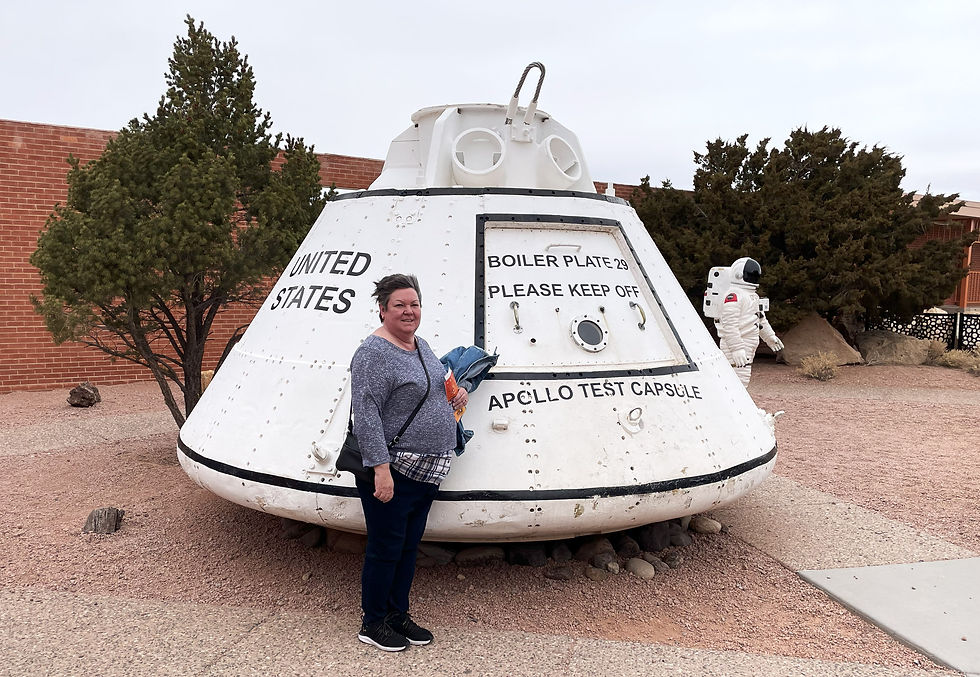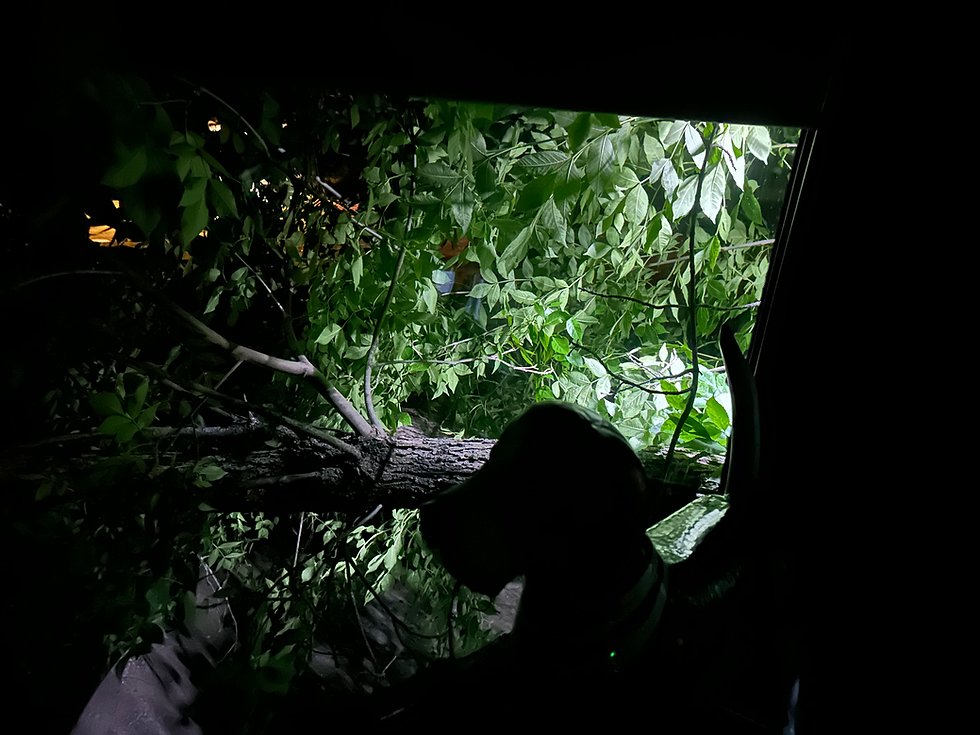Now That's a Crater!
- 1jdbuss
- Feb 7, 2024
- 2 min read
On Tuesday we visited the Meteor Crater Natural Landmark located just outside Winslow AZ. It was a windy afternoon, so windy in fact that I could not safely walk out to the end of the site to take good pictures, but we were able to take a few from the back of the building. I did walk out, but was afraid to take my phone out of my pocket.

It was $56 with our senior discount, so a little pricy, but what isn't these days. It was on our bucket list to see, and that we did, it only takes a few minutes to visit, don't plan to spend a lot of time here, but its worth the time, I did learn that they used this site to train for Apollo 11 and 13 missions. Also it was amazing to see how such a small rock from outer space can create such a large hole in the ground. The video is very educational and only takes about 10 minutes.

They have a nice gift shop and a cafe, we ordered wings and a pretzel. The wings were not cooked fully so we opted not to eat them, we would have returned them but we wanted to get on the road before the snow and rain came so we took the food to go, that was a mistake, at least the pretzel was not bad, not great, but with the cheese it was better than raw chicken.
According to Wikipedia; Meteor Crater or Barringer Crater is an impact crater about 37 mi east of Flagstaff and 18 mi west of Winslow in the desert of northern Arizona, United States. The site had several earlier names, and fragments of the meteorite are officially called the Canyon Diablo Meteorite, after the adjacent Canyon Diablo. Wikipedia. The Meteor Crater lies at an elevation of 5,640 ft (1,719 m) above sea level. It is about 3,900 ft in diameter, some 560 ft deep, and is surrounded by a rim that rises 148 ft above the surrounding plains. The center of the crater is filled with 690–790 ft of rubble lying above crater bedrock. One of the features of the crater is its squared-off outline, believed to be caused by existing regional jointing (cracks) in the strata at the impact site. Despite an attempt to make the crater a public landmark, the crater remains privately owned by the Barringer family to the present day through their Barringer Crater Company. The Lunar and Planetary Institute, the American Museum of Natural History, and other science institutes proclaim it to be the "best-preserved meteorite crater on Earth". It was designated a National Natural Landmark in November 1967.




Comments